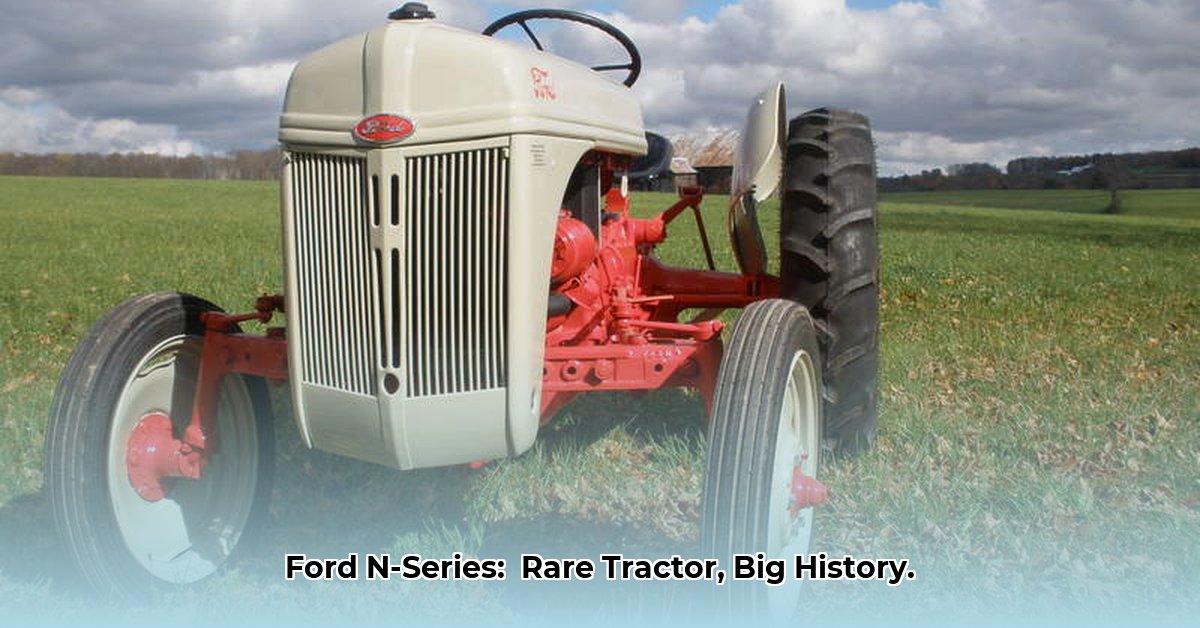
The Ford N-Series tractors—the 9N, 2N, and the iconic 8N—represent a pivotal moment in American agricultural history. More than just farm machinery, these machines revolutionized farming practices, leaving a legacy that continues to captivate collectors and enthusiasts today. This article delves into their fascinating history, exploring their innovative features, wartime adaptations, and the enduring legal battles that shaped their legacy. For more detailed specifications on the 8N, check out this 8N Tractor resource.
The 9N: A Revolutionary Beginning
The year was 1939. Farming was still largely a backbreaking endeavor. Then came the Ford 9N, a technological marvel for its time. Its most revolutionary feature? The three-point hitch, a design conceived by Harry Ferguson. This ingenious system simplified attaching and detaching implements, dramatically increasing efficiency. Did this innovation immediately translate to financial success for Ford? Not entirely. The 9N's complex design initially presented manufacturing challenges, impacting early profitability despite strong sales. The initial complexities of mass-producing this technologically advanced machine created some early hurdles.
The 2N: Wartime Adaptation
World War II profoundly impacted the Ford N-series trajectory. The 2N, produced from 1941 to 1947, reflects the exigencies of wartime. Material shortages forced design simplifications. While retaining the core functionality of the 9N, the 2N saw a reduction in non-essential components, a move driven by the need to utilize available resources effectively. This pragmatic approach, born out of necessity, didn't compromise the 2N's dependability, a testament to its robust engineering. The switch to readily available steel wheels from the original cast iron also showcases the strategic material substitutions that kept production lines running. This adaptation showcases the ingenuity of Ford engineers in response to wartime constraints. How did these changes affect farmer acceptance of the 2N? They remained loyal, proving the tractor's inherent value.
The 8N: A Triumphant Success
The post-war era witnessed the arrival of the Ford 8N (1947-1952), arguably the most celebrated of the N-series. Building upon its predecessors' innovations, the 8N boasted a more powerful engine, an improved three-point hitch, and a smoother four-speed transmission. Its reliability and user-friendliness cemented its popularity, transforming it into a symbol of American agricultural prowess. The 8N's enduring appeal stems from its balanced combination of robust build, intuitive operation, and impressive performance. What made the 8N so exceptionally popular? Its combination of functionality and durability resonated deeply with farmers.
The Legal Battles: Ford vs. Ferguson
The story of the Ford N-series is intertwined with a significant legal battle between Henry Ford and Harry Ferguson over the patents for the three-point hitch. This wasn't just a corporate dispute; it reshaped the agricultural machinery industry, impacting designs and legal practices for decades. The implications of this high-profile legal battle extended far beyond the two companies, influencing industry standards and intellectual property rights protections.
Comparing the Giants: 9N, 2N, and 8N
A concise comparison of these three iconic tractors highlights their evolution:
| Feature | 9N | 2N | 8N |
|---|---|---|---|
| Engine Horsepower | ≈20 hp | ≈20 hp | ≈20 hp |
| Transmission | 3-speed | 3-speed | 4-speed |
| Three-Point Hitch | Basic Design | Basic Design | Improved Design |
| Production Years | 1939-1941 | 1941-1947 | 1947-1952 |
More Than Just Machines: Collector's Value and Preservation
Today, these classic tractors hold immense value for collectors. Their historical significance, robust engineering, and nostalgic appeal make them highly sought-after pieces of Americana. Restoring a Ford N-series tractor is a labor of love, requiring expertise and dedication. Many preservation societies and passionate enthusiasts work tirelessly to maintain these machines, ensuring their legacy for future generations. The surge in collector interest highlights the enduring legacy of these iconic machines.
Legacy and Modern Relevance
The Ford N-series tractors' impact on agriculture is undeniable. They mechanized farming, boosting efficiency and transforming agricultural practices. Their legacy extends beyond the field, inspiring generations of engineers and shaping the future of agricultural technology. Their enduring popularity highlights the enduring legacy of innovation and resilience.
Three Pivotal Points:
- The three-point hitch revolutionized farming efficiency.
- Wartime adaptations showcased ingenuity in resource management.
- The Ford-Ferguson legal battle significantly impacted industry practices.